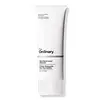What's inside
What's inside
 Key Ingredients
Key Ingredients

 Benefits
Benefits

 Concerns
Concerns

 Ingredients Side-by-side
Ingredients Side-by-side

Water
Skin ConditioningBehenyl Alcohol
EmollientPolyglyceryl-2 Stearate
EmulsifyingGlycolipids
Skin ConditioningPentylene Glycol
Skin ConditioningPolyglyceryl-6 Dicaprate
EmulsifyingGlyceryl Stearate
EmollientStearyl Alcohol
EmollientDiutan Gum
Polyacrylate Crosspolymer-6
Emulsion StabilisingSodium Phytate
Phytic Acid
Trisodium Ethylenediamine Disuccinate
Sodium Benzoate
MaskingPhenoxyethanol
PreservativeChlorphenesin
AntimicrobialWater
Skin ConditioningPropanediol
SolventGlycerin
HumectantSodium Methyl Cocoyl Taurate
CleansingCocamidopropyl Betaine
CleansingPEG-120 Methyl Glucose Dioleate
EmulsifyingSalicylic Acid
MaskingPEG-150 Pentaerythrityl Tetrastearate
EmulsifyingPEG-6 Caprylic/Capric Glycerides
EmulsifyingBetaine
HumectantZinc PCA
HumectantPhenoxyethanol
PreservativeSodium Chloride
MaskingAllantoin
Skin ConditioningSodium Hydroxide
BufferingCoco-Glucoside
CleansingGlyceryl Oleate
EmollientBenzyl Alcohol
PerfumingCoconut Acid
CleansingEthylhexylglycerin
Skin ConditioningSodium Benzoate
MaskingCitric Acid
BufferingDehydroacetic Acid
PreservativeTrisodium Ethylenediamine Disuccinate
Tocopherol
AntioxidantHydrogenated Palm Glycerides Citrate
EmollientWater, Propanediol, Glycerin, Sodium Methyl Cocoyl Taurate, Cocamidopropyl Betaine, PEG-120 Methyl Glucose Dioleate, Salicylic Acid, PEG-150 Pentaerythrityl Tetrastearate, PEG-6 Caprylic/Capric Glycerides, Betaine, Zinc PCA, Phenoxyethanol, Sodium Chloride, Allantoin, Sodium Hydroxide, Coco-Glucoside, Glyceryl Oleate, Benzyl Alcohol, Coconut Acid, Ethylhexylglycerin, Sodium Benzoate, Citric Acid, Dehydroacetic Acid, Trisodium Ethylenediamine Disuccinate, Tocopherol, Hydrogenated Palm Glycerides Citrate
 Reviews
Reviews

Ingredients Explained
These ingredients are found in both products.
Ingredients higher up in an ingredient list are typically present in a larger amount.
Phenoxyethanol is a preservative that has germicide, antimicrobial, and aromatic properties. Studies show that phenoxyethanol can prevent microbial growth. By itself, it has a scent that is similar to that of a rose.
It's often used in formulations along with Caprylyl Glycol to preserve the shelf life of products.
Sodium Benzoate is a preservative. It's used in both cosmetic and food products to inhibit the growth of mold and bacteria. It is typically produced synthetically.
Both the US FDA and EU Health Committee have approved the use of sodium benzoate. In the US, levels of 0.1% (of the total product) are allowed.
Sodium benzoate works as a preservative by inhibiting the growth of bacteria inside of cells. It prevents the cell from fermenting a type of sugar using an enzyme called phosphofructokinase.
It is the salt of benzoic acid. Foods containing sodium benzoate include soda, salad dressings, condiments, fruit juices, wines, and snack foods.
Studies for using ascorbic acid and sodium benzoate in cosmetics are lacking, especially in skincare routines with multiple steps.
We always recommend speaking with a professional, such as a dermatologist, if you have any concerns.
Learn more about Sodium BenzoateTrisodium Ethylenediamine Disuccinate is used to help stabilize a product.
It is a chelating agent, meaning it helps prevent metal ions from binding to other ingredients. This prevents unwanted reactions in products. Metal ions can come into a product via the water ingredient. They are found in trace amounts and are not known to be harmful.
Water. It's the most common cosmetic ingredient of all. You'll usually see it at the top of ingredient lists, meaning that it makes up the largest part of the product.
So why is it so popular? Water most often acts as a solvent - this means that it helps dissolve other ingredients into the formulation.
You'll also recognize water as that liquid we all need to stay alive. If you see this, drink a glass of water. Stay hydrated!
Learn more about Water